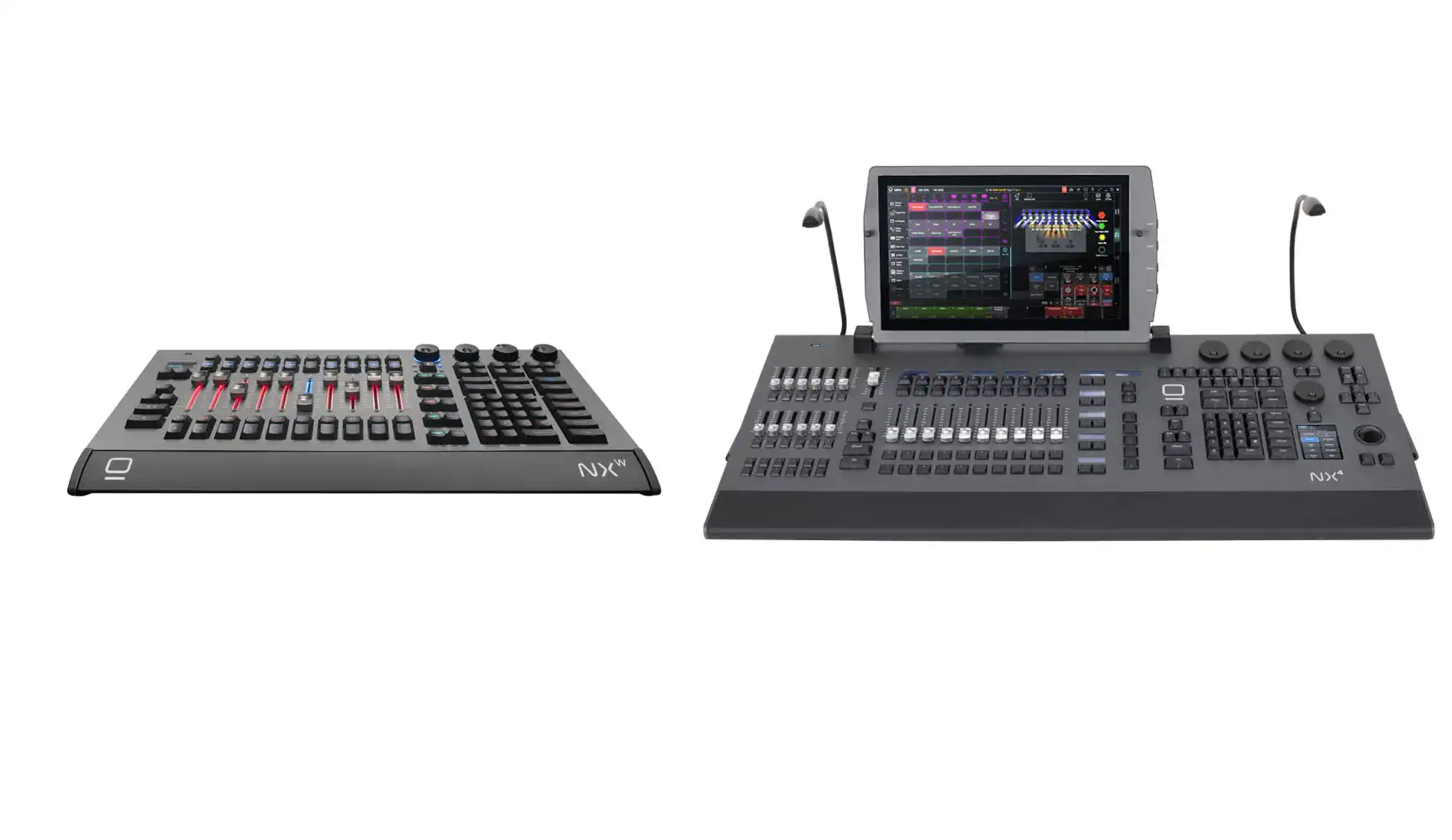Ultimate Lighting Console Showdown: Obsidian NXW vs Obsidian NX4

We explore two powerful lighting control solutions from Obsidian Control Systems Obsidian NXW vs Obsidian NX4. As part of the ONYX ecosystem, both consoles serve different purposes in the lighting production pipeline, targeting professionals seeking scalable, robust, and intuitive control systems. Whether you're a touring lighting designer, a production company technician, or a venue manager, this comparison will help you decide which unit best fits your creative and technical needs.
Obsidian NXW: The Portable Powerhouse
The NXW (Obsidian NX Wing) is not a console in the traditional sense, but rather a USB-based control surface designed to work seamlessly with ONYX software running on an external Windows PC. It brings tactile control, portability, and affordability into a single, elegant solution.
Key Features:
10 motorized faders
4 digital rotary encoders
Command keypad for direct control access
Full ONYX software license included
Compact and road-ready form factor
Benefits:
The NXW is ideal for programmers on the go or budget-conscious productions where a fully integrated console isn't necessary. Its biggest advantage lies in its flexibility. By connecting via USB to any Windows PC with ONYX installed, it transforms your laptop into a fully functional lighting console.
This makes it perfect for:
Touring acts where space and weight matter
Rental houses looking for an affordable, scalable solution
Programmers who prefer custom-built PCs or touchscreens
It also works excellently as a wing extension for other ONYX consoles (like the NX1 or NX4), giving you extra playbacks and encoders without doubling the investment.
Obsidian NX4: All-In-One Professional Console
At the other end of the spectrum, the NX4 is a fully standalone lighting control console designed for mid to high-end production environments. It offers an all-in-one hardware/software solution with an integrated processor, touchscreens, and high fader/encoder counts.
Key Features:
15.6” multi-touch widescreen
10 motorized playback faders
10 additional playbacks (non-motorized)
Encoders and dedicated parameter keys
4 DMX universes out of the box (expandable up to 128)
Integrated Dylos pixel mapping engine
Benefits:
The NX4 is engineered for serious professionals. Whether it’s a touring concert rig, corporate AV, or complex theatrical production, the NX4 offers the power, ergonomics, and workflow efficiency required for demanding environments.
Some standout advantages include:
Self-contained operation – no need for an external computer
Integrated hardware and software ensure tight performance and low latency
High number of DMX universes and networking options for large rigs
Dylos integration offers native pixel mapping, eliminating the need for third-party servers
The console is especially useful when speed and workflow are critical. Dedicated parameter buttons, customizable views, and real-time feedback give lighting professionals everything they need at their fingertips.
Conclusion: Obsidian NXW vs Obsidian NX4 (Flexibility vs Firepower)
Both the Obsidian NXW and NX4 deliver powerful lighting control through ONYX, but they serve very different needs.
Choose the NXW if you:
Prefer using your own PC/laptop for control
Need a highly portable setup
Want to expand an existing ONYX console
Are working in tight spaces or low-budget environments
Choose the NX4 if you:
Require a robust, integrated system
Are programming complex shows with high channel counts
Need instant access to multiple playbacks and parameters
Value a clean, professional footprint in your workflow
Ultimately, both devices provide access to the same ONYX software environment, meaning your programming skills are fully transferable across either platform. Whether you start with the NXW or jump into an NX4, you're investing in a flexible ecosystem that can scale with your growing production needs.
Need help choosing or want a live demo? Contact us at sales@phantos.com.au and let’s explore how the Obsidian ecosystem can fit into your next project.













